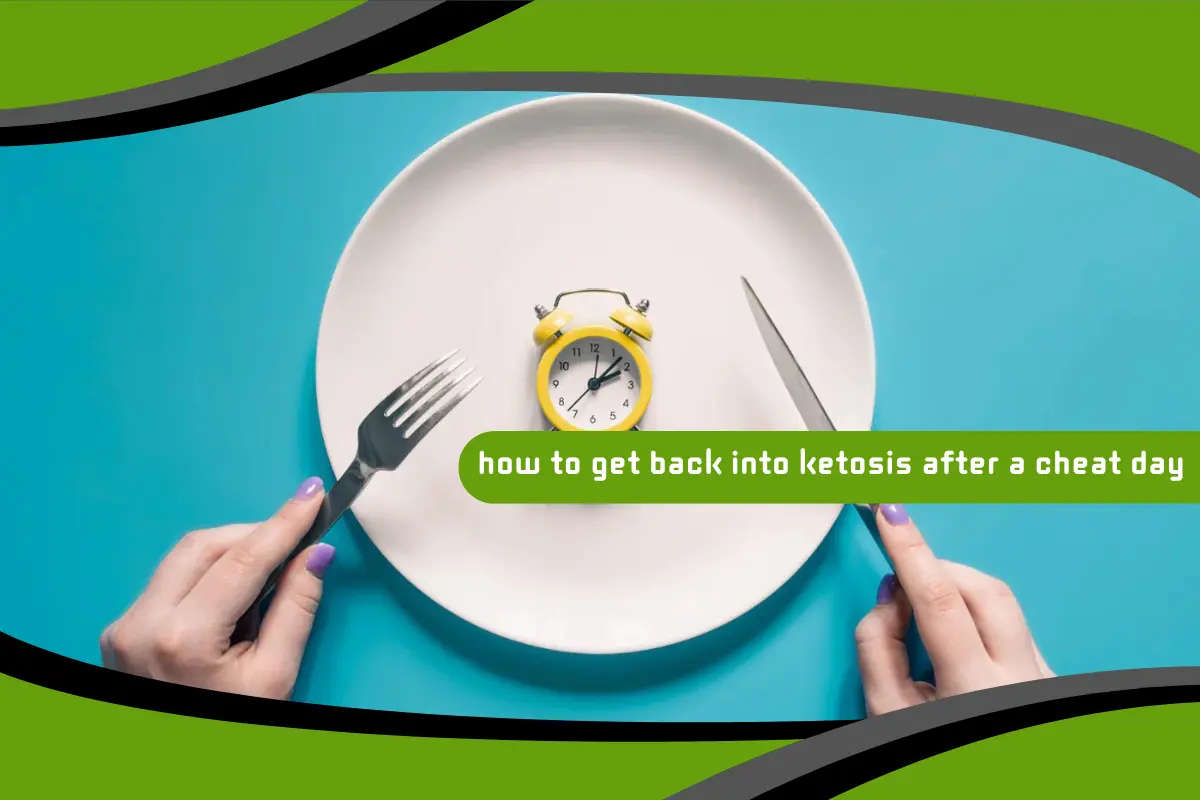Cheating on a ketogenic diet happens even to the most dedicated individuals. Whether it was a holiday, a social gathering, or just a spontaneous indulgence, falling out of ketosis can feel frustrating. But the good news is, getting back into ketosis after a cheat day is absolutely achievable with the right strategy and mindset. This guide outlines everything you need to know to restart your keto journey effectively and confidently.

Understanding What Happens After a Cheat Day
When you consume carbohydrates during a cheat day, your body exits ketosis as it switches back to glucose as its primary energy source. Insulin levels rise, ketone production stops, and glycogen stores refill. The body’s metabolic state shifts away from fat-burning. Understanding this process helps you make informed decisions to return to ketosis faster.
The Role of Insulin in Ketosis Recovery
Insulin is a hormone that promotes glucose uptake and storage. During a cheat day, insulin levels spike, preventing fat from being used for fuel. Lowering insulin levels again is key to re-entering ketosis. Strategies that improve insulin sensitivity and reduce circulating insulin can speed up this process.
Watch also: How Avocado and Eggs Can Fuel Your Keto Diet: A Nutritional Powerhouse
Accepting the Cheat Day Without Guilt
The first step to bouncing back is letting go of guilt. One day of eating carbs does not define your entire health journey. Stress and self-blame can raise cortisol, which may further hinder your progress. Treat the cheat day as a learning experience and move forward with a focused plan.
Reintroducing Keto Foods Immediately
Start your next meal with keto-approved foods such as eggs, avocados, fatty fish, and leafy greens. Avoid delaying the return to keto, as prolonged high-carb eating can make it more difficult to transition back. Getting strict from the next meal onward sends a clear signal to your body.
Hydration as a Detoxifying Catalyst
Carbohydrates cause water retention. Once you cut them out again, your body starts to shed water rapidly. Drinking plenty of water helps flush out excess sodium and toxins, reducing bloating and easing the return to ketosis. Aim for at least 3 liters of water daily during your comeback phase.
Using Intermittent Fasting to Speed Up Ketosis
Intermittent fasting is a powerful tool for entering ketosis faster. By extending the time between meals, your body depletes glycogen stores more quickly and begins to produce ketones. A 16:8 or 18:6 fasting window can be particularly effective after a cheat day.
Reducing Net Carbs Aggressively
To get back into ketosis, cut your daily net carb intake to fewer than 20 grams. Focus on fiber-rich, low-carb vegetables like spinach, zucchini, and kale. Stay away from processed keto snacks that may contain hidden sugars or starches. Precision in carb counting is crucial at this stage.
Reintroducing Exercise to Burn Through Glycogen
Physical activity, especially high-intensity or resistance training, helps burn through glycogen stores. Once glycogen is depleted, your body has no choice but to resume ketone production. Even a brisk 30-minute walk can make a difference in accelerating the process.
Monitoring Ketone Levels for Motivation
Tracking your ketone levels with urine strips or a blood ketone meter gives you real-time feedback on your progress. Seeing even a small increase in ketone levels can be highly motivating and confirm that your strategies are working. It also helps identify what changes are most effective.
Emphasizing Healthy Fats for Sustained Energy
Fat is your primary fuel on keto. Prioritize sources like coconut oil, olive oil, grass-fed butter, and fatty cuts of meat. These fats not only provide energy but also support hormone function and satiety, helping you stay committed without cravings or dips in energy.
Avoiding Hidden Carbs and Sweeteners
Even on keto, some foods and sweeteners may trigger insulin spikes or contribute hidden carbs. Pay close attention to labels and avoid ingredients like maltodextrin, dextrose, and sorbitol. Stick to whole, single-ingredient foods during your first few days back on track.
Rebalancing Electrolytes After Carb Withdrawal
Returning to keto after a cheat day may bring back flu-like symptoms known as the “keto flu.” Replenishing electrolytes—especially sodium, potassium, and magnesium—is essential to avoid fatigue, headaches, and cramps. Bone broth, avocado, and mineral supplements can help restore balance.
Planning Your Meals for the First Three Days
Meal planning removes guesswork and prevents accidental carb intake. Aim for three nutrient-dense meals a day for the first 72 hours. A typical day might include eggs and avocado for breakfast, salmon and spinach for lunch, and grilled chicken with cauliflower rice for dinner.
Staying Mentally Focused and Consistent
Mental discipline is just as important as nutritional strategy. Remind yourself of your goals and visualize the benefits of being back in ketosis. Journaling or using a progress-tracking app can provide structure and accountability during the transition period.
Supplementing with MCT Oil for Quick Ketone Production
Medium-chain triglycerides (MCTs) are quickly converted to ketones by the liver. Adding MCT oil to your morning coffee or smoothie can give your body a ketone boost and help ease the energy transition. Start with a small dose to avoid digestive discomfort.
Avoiding Further Cheat Days in the Short Term
Once back in ketosis, avoid scheduling another cheat day for at least two weeks. Your body needs time to re-establish fat adaptation and metabolic flexibility. Premature cheating can lead to a cycle of inconsistency that undermines your progress and motivation.
Learning from the Cheat Day Experience
Use your cheat day as a learning opportunity. Was it emotional eating? Social pressure? Poor planning? Understanding your triggers enables you to put systems in place to prevent future setbacks. Developing strategies to navigate cravings and events can empower your long-term success.
Exploring Exogenous Ketones as a Support Option
Exogenous ketone supplements provide an external source of ketones and may help ease symptoms during the transition. While they don’t replace a strict ketogenic diet, they can offer mental clarity and energy during the first few days post-cheat.
Building a Sustainable Keto Lifestyle
Ultimately, success on keto comes down to sustainability. Incorporate variety, prepare for challenges, and build habits that align with your life. The goal isn’t perfection but consistency. A single cheat day doesn’t derail a well-established lifestyle—it simply becomes part of your journey.
Celebrating Your Return to Ketosis
Once you’re back in ketosis, take a moment to acknowledge your effort. Getting back on track is a sign of commitment and resilience. Celebrate by setting a new goal, whether it’s a recipe challenge, a fitness milestone, or simply enjoying the renewed mental clarity that ketosis brings.
Watch also: What to Do If You Cheat on Keto: A Complete Recovery Guide




No comment